Heal's Mod Textile Designs
I vaguely (I’m lying) remember the word “mod” used during the late 1960s to describe anything that was slightly “edgy” (I hate that word) and “hip.” It encompassed everything from hippie-inspired garb to International Style furniture. It also included all sorts of modern design that displayed anything other than a conventional aesthetic. Here are some classic mod textile designs from a period when I imagine they would have been featured in a shop on Carnaby Street (THE mod street in London during the late 60s for avant-garde everything).
The textiles displayed in this post were all produced by Heal’s, a venerable furniture/interior design/textile design company in London that’s been around since 1810, but has never hesitated to break the mold when it came to contemporary design. In the second decade of the 1800s, they introduced feather-filled mattresses into Britain. This replaced the centuries-old practice of straw mattresses. I’ve slept on a straw mattress, and it isn’t conducive to a comfortable night’s sleep.
In the 1830s, Heal’s was one of the first firms to place advertisements in the book jackets of serialized novels (such as those of Charles Dickens). In 1917 they started the Mansard Gallery in their store on Tottenham Court Road in London as a venue to see avant-garde art. This gallery was the first to feature the work of Modigliani in Britain.
Soon after 1933, Heal’s began to exhibit pieces of distinctly radical Bauhaus designs, including pieces such as the Barcelona furniture of Mies van der Rohe. During World War II (1939–1945) they produced parachutes for the war effort, leading to the introduction of Heal’s Fabrics. By the mid-1950s, they were marketing designs in such progressive styles as Mid-Century Modern, International Style, Scandinavian, and ultimately the coolest of mod designs, Pop Art and Op Art.
Here are some examples from their mod period:
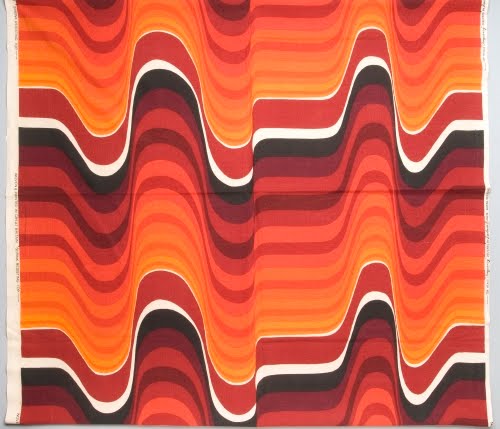 |
| Barbara Brown (born 1932, Britain) for Heal’s (1810 to present, London), Frequency textile, 1969. Printed, textured plain weave cotton, 55 1/2" x 48 1/2" (141 x 123.2 cm). Image © Philadelphia Museum of Art. (PMA-6285) |
Brown was the most high-profile designer of the period for Heal’s, starting in the early 1960s. Many of her designs from that period reflected Op Art. This push-pull illusion was a hallmark of Op Art.
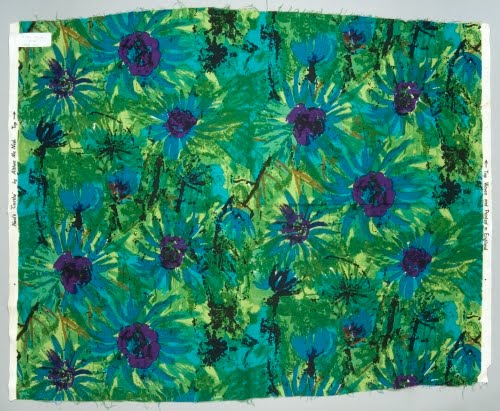 |
| Althea McNish (born 1930s, Trinidad) for Heal’s (1810 to present, London), Caribe textile, 1962. Printed unbalance plain weave cotton, 38 1/2" x 48" (97.8 x 121.9 cm). Image © Philadelphia Museum of Art. (PMA-6292) |
McNish was the first British designer with African roots to gain an international reputation for her textile designs. This design definitely displays the influence of Vincent van Gogh (1853–1890), one of her declared influences.
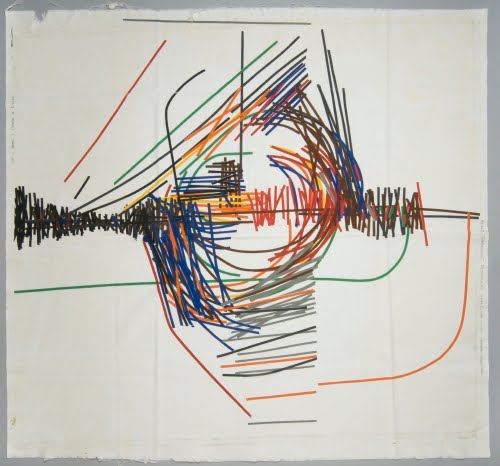 |
| John Plumb (born 1927, Britain) for Heal’s (1810 to present, London), Chiricahua textile, 1960–1965. Printed cotton plain weave, 50" x 45 1/2" (127 x 115.6 cm) Image © Philadelphia Museum of Art. (PMA-6295) |
Although Britain didn’t have its own post-war abstract school, this textile totally reminds me of the gestural wing of Abstract Expressionism in the US.
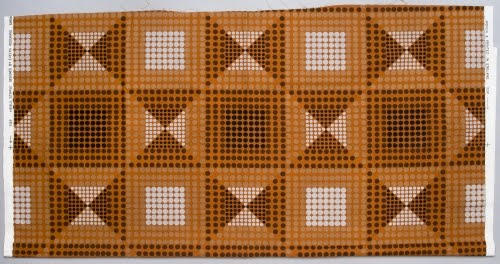 |
| Evelyn Redgrave (born ca. 1944, Britain) for Heal’s (1810 to present, Britain), Stipple textile, 1969. Printed cotton plain weave, 52 ½" x 49 7/16" (133.4 x 125.7 cm). Image © Philadelphia Museum of Art. (PMA-6299) |
Redgrave was another mid-century designer whose Op Art textile designs gained an international reputation. This piece really reminds me of the paintings of Victor Vasarely (1906–1997).
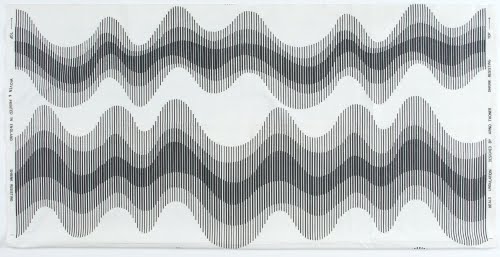 |
| Arno Thoner (born 1940s, Netherlands) for Heal’s (1810 to present, London), Undulation textile, 1966 (?). Printed cotton plain weave, 47 1/4" x 48 3/4" (120 x 123.8 cm). Image © Philadelphia Museum of Art. (PMA-6315) |
Op Art-inspired designs like this (it reminds me of Richard Anuszkiewicz paintings) were hot and “mod” until the first half of the 1970s.
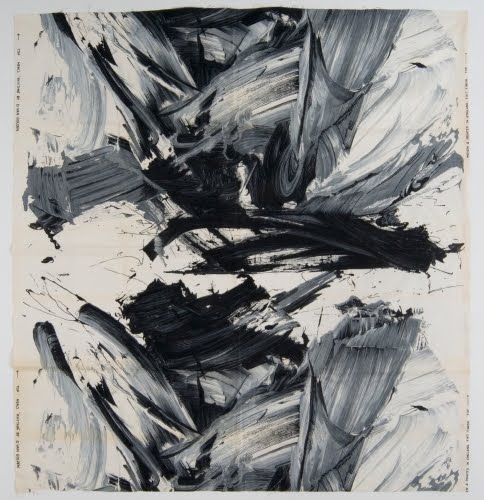 |
| Daan van Golden (born 1936, Netherlands) for Heal’s (1810 to present, London), Rhythm textile, ca. 1962–1965. Printed cotton plain weave, 53" x 50" (134.6 x 127 cm). Image © Philadelphia Museum of Art. (PMA-6316) |
One of the many influences in Golden’s exciting designs was Abstract Expressionism. That influence is clear in this textile. It reminds me of a Willem de Kooning lithograph that he put on the litho stone with a floor mop!
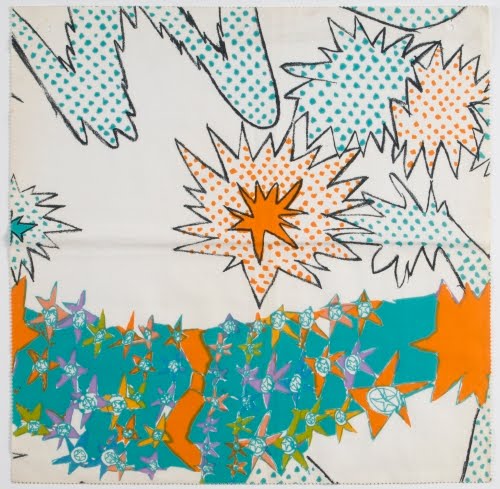 |
| Zandra Rhodes (born 1940, Britain), Textile, ca. 1965. Printed cotton plain weave, 23 1/4" x 23 1/4" (59.1 x 59.1 cm). Image © Philadelphia Museum of Art. (PMA-6313) |
Rhodes designed really awesome New Wave fashions in the early 1980s. For the mid-1960s, this textile is pretty forward looking, combining elements of Pop Art and the random abstraction of the Abstraction-Création group of the late 1950s.
Correlations to Davis programs: Explorations in Art Grade 6: 4.Studio 23-24; A Personal Journey: 3.1, 3.4; A Community Connection: 5.2; A Global Pursuit: 9.4; Exploring Visual Design: 11; The Visual Experience: 10.8, 12.4, 16.7; Discovering Art History: 2.2

Comments